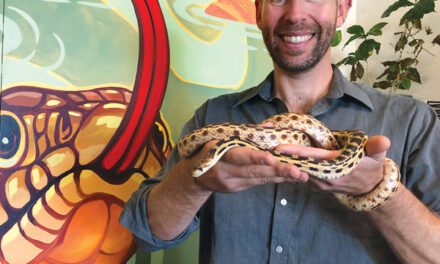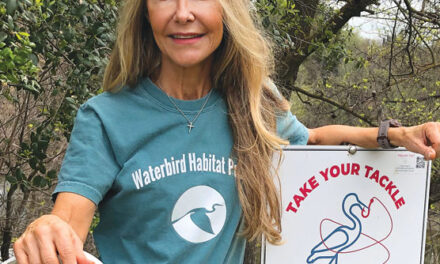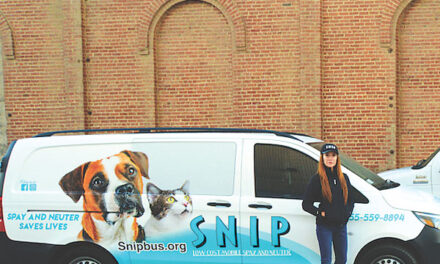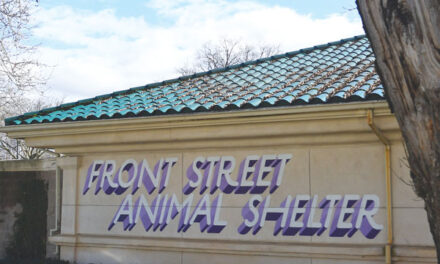Gov. Gavin Newsom included $50 million in the 2020-21 state budget to stop the killing of adoptable dogs and cats in California animal shelters.
It was a bold move. Then came the hard part. How should those dollars be spent? Where can they make the biggest impact?
Here’s where things went wrong. The governor assigned the responsibility of dishing out the money to the UC Davis Koret Shelter Medicine Program.
Last year, Koret passed $15.5 million to animal shelters through grants. Another $12.5 million went to consultations, staff training, bootcamps and webinars. Did the governor envision a “no-kill state” by means of Zoom and webinars?

The first grant cycle focused on keeping animals out of shelters by encouraging “community sheltering” and “finder fostering.” Koret wants to stop the killing by diverting dogs and cats away from shelters through reduced intake and “surrender-prevention programs.”
The city’s Front Street Animal Shelter embraces this approach. Staff turn away healthy stray cats, many as young as 8 weeks old, regardless of whether they are altered. Management says shelters are “scary” places. Cats will find their own way home. For dogs, the public is asked to house, feed and care for healthy strays until owners or new homes are found.
The county’s Bradshaw Animal Shelter also turns away healthy stray cats, but on a capacity basis, says Shelter Director Annette Bedsworth. “If on that day, the best decision is to be outside the shelter, then yes,” the animal will be turned away. “Because there is no place for that cat to go in the shelter,” she says.
Does this approach reduce the number of unwanted cats and dogs in our community?
“New shelter trends, including the ‘community sheltering’ and ‘reduced intake’ models, have completely ignored our need for bolstered spay and neuter,” says attorney Hilary Bagley Franzoia, who headed the Sacramento County District Attorney’s Animal Cruelty Unit and Animal Cruelty Task Force.
Another Koret grant focused on increasing “inclusivity.” Suggestions include simplifying or eliminating adoption applications, which can be viewed as a “barrier.” Koret also encourages reducing or eliminating adoption fees, which allows people to adopt regardless of income.
Earlier this year, Front Street adopted out 223 animals over eight days with a no-fee adoption event. Under the “foster-to-adopt” practice, 30 dogs went to new homes without being spayed or neutered.
Last month, the Bradshaw Animal Shelter adopted out 186 dogs and cats during a no-fee event. Under “foster-to-adopt,” 32 dogs and 88 cats were released unaltered.
“By rejecting unaltered stray animals at intake and releasing unaltered shelter animals as fosters without requiring spay/neuter, the trenders have caused more pain and suffering, more bad death on our streets, and facilitated more preventable breeding than any time in recent history,” Bagley Franzoia says.
“Our shelter tries to be inclusive to all potential adopters,” Front Street Shelter Manager Phillip Zimmerman says. “Asking if someone is renting or owns their home not only forces people to lie to us if they believe we are looking for a way to disqualify them from adoption, but it also targets lower income families and (people of color), many of whom may not own a home.”
Animal advocates say there’s a good reason to inquire about housing status. If the adopter rents, does the landlord allow pets? If not, where will the animal end up when discovered by the landlord? Back at the shelter or, worse, on the street?
“Rather than granting money to shelters that follow their diversity and inclusion directives, Koret should be using their influence with the governor and state officials to solve the alleged veterinarian shortage,” Bagley Franzoia says.
The national shortage of veterinary professionals makes it difficult for shelters to attract and retain veterinarians and offer spay/neuter surgeries, says Sacramento SPCA CEO Kenn Altine. “Allocating sustainable resources toward the hiring and retaining of veterinary staff is a valuable investment in the future of animal care in our community,” he adds.
Altine reports that 2.7 million fewer spay/neuter surgeries were performed during the pandemic. “Unaltered and underaged animals are flooding into shelters,” he says.
Bagley Franzoia says, “Koret’s efforts should be spent on all aspects of free spay/neuter, including ways to recruit or entice veterinarians to perform it.”
To be fair, at the end of 2022, Koret offered grants to increase spay/neuter services in California animal shelters. The Sacramento SPCA received $705,000 over two years to attract and retain qualified staff. Front Street Animal Shelter received $53,500 to alter pets of homeless people.
However, according to Koret’s report to the Legislature, only $8.6 million was awarded statewide for spay/neuter. Yet applications for spay/neuter grants exceeded the $50 million allocated to make California no-kill, clearly demonstrating the need.
Bradshaw’s director Bedsworth believes in targeted spay/neuter. “The No. 1 ZIP code of animals entering the shelter is in the Florin area,” she says. Bedsworth plans to “spay and neuter all of the Florin area” using local vets and reimbursing those doctors with Koret grant funds.
“I don’t want this community to put out any money. If I can ultimately show that spaying/neutering this one ZIP code made a difference in the number of animals entering the shelter, it’s going to speak volumes,” she says.
The big question: Where will the remaining $22 million be spent?
Bagley Franzoia says, “We are at a place where the only viable solution is to mandate spay and neuter and have the remainder of the state money be devoted solely to strong public spay/neuter campaigns, which is where the state money should have been spent to begin with.”
Cathryn Rakich can be reached at crakich@surewest.net. Follow us on Facebook, Twitter and Instagram: @insidesacramento.















